Spray painting a bike is a popular DIY project that can give your old bike a new lease on life. The process involves using spray paint to apply a fresh coat of color to the bike’s frame, wheels, and other parts.
Before you start, it’s important to choose the right spray paint for your bike and prepare the surface properly by cleaning and sanding any rough areas. Spray painting your bike can be fun and affordable, giving it a fresh look.
Whether you want to add some color or cover up scratches and rust, spray painting is a great option. However, before diving into the project, preparing properly is important. And follow the right steps to ensure a smooth and long-lasting finish. Here is everything you need to know about how to spray paint a bike. We have covered you, from why you should do it to what materials you need.
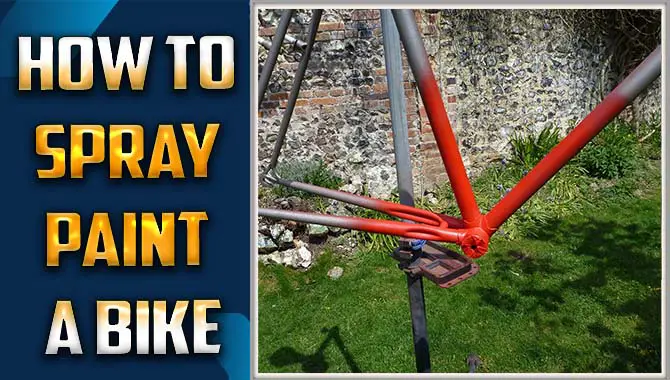
How To Spray Paint A Bike: 10 Easy Steps
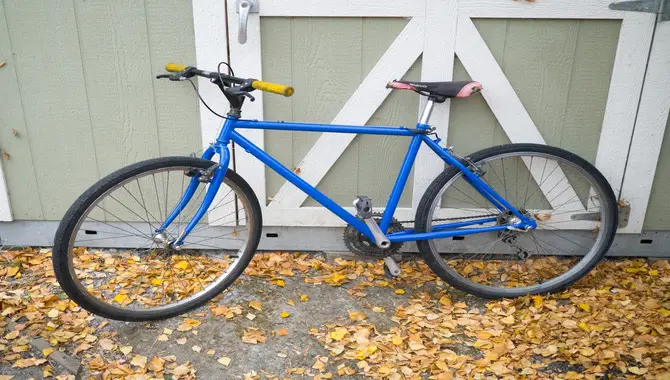
Spray paint bikes are a unique way to customize and add personal flair to your two-wheeled ride. It uses spray paint to create designs or patterns directly on the bike frame. This can be a fun DIY project for those who enjoy getting creative with their bikes.
However, it is important to note that proper preparation and technique are crucial for a successful outcome. If you are interested in trying out spray paint on your bike, make sure to do your research on the best techniques and materials to use. If you want to give your bike a new look, spray painting it can be fun and cost-effective. Here are 10 easy steps on how to spray paint a bike.:
1. Needed Materials For Repainting A Bicycle
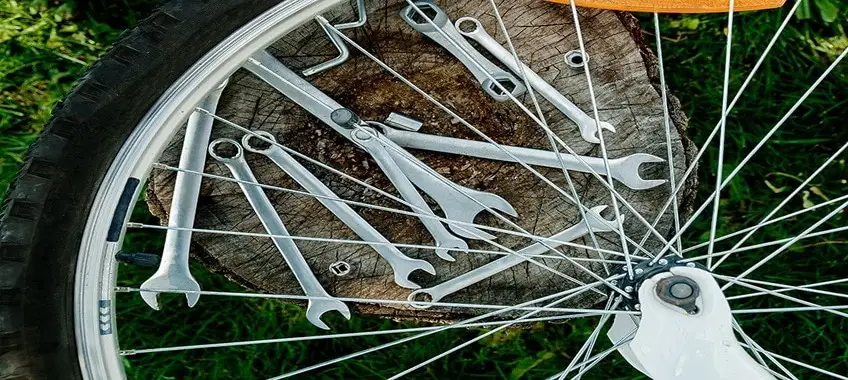
To repaint your bicycle efficiently, you require specific materials that help deliver optimal results. Start by selecting high-quality spray paint designed explicitly for cycling needs. Sand the bike’s surface with grit sandpaper before applying a coat of primer for better adhesion and durability.
Use masking tape and newspaper to protect areas you do not want to cover in new paint. Wear gloves to avoid leaving lint on the bike frame while spraying in a well-ventilated area. Doing so guarantees a fresh look with no drips or corrosion damage.
2. Preparing Your Bike
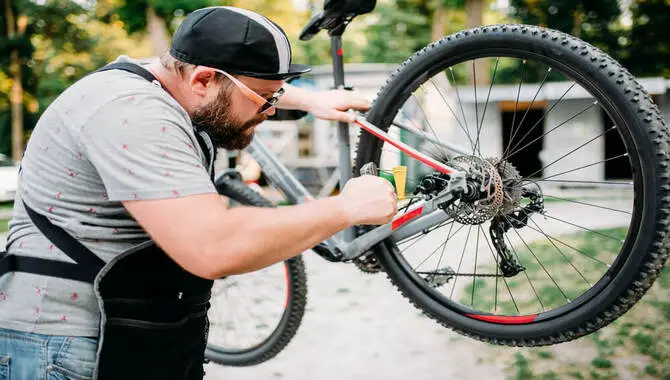
Before spray painting your bike, preparing the surface correctly is crucial. Use grit sandpaper to remove any rust or chipped old paint from the bike frame. Clean the frame thoroughly with a degreaser to remove dirt and oil residue. Ensure all surfaces are dry before covering any parts you don’t want to paint with masking tape. These steps will ensure that your bike gets a fresh look and a new coat of paint that lasts longer.
3. Suitable Bike Paint Options

Choose the right paint type for a fresh look at your cycling companion. You can choose from various options- spray paint, enamel paint, or powder coat paint to give it a long-lasting makeover. While spray painting is easy-to-use with quick-drying advantages for minor touch-ups, enamel paints need more preparation and effort to apply but provide a durable finish.
For professional use or if seeking high-quality results, powder coat paint works wonders but demands specialized equipment- worth investing in.
4. Workspace Preparation
When it comes to creating an optimal workspace, preparation is key. Before you begin setting up your workspace, take some time to consider what you will need to be productive and comfortable. This may include a desk and chair that are ergonomically designed, adequate lighting, and storage solutions for your supplies and equipment.
Once you have identified your needs, it’s important to declutter the space and remove any unnecessary items or distractions. This will help ensure that your workspace is organized and conducive to productivity. Additionally, consider adding personal touches such as plants or artwork to make the space inviting and inspiring. With the right preparation, you can create a workspace that supports your productivity and helps you achieve your goals.
5. Disassembling Your Bike

To achieve a high-quality finish when repainting your bike frame with spray paint. Or other types of coating materials like lacquer or polyurethane gloss. For professional use or just giving it a makeover for cycling enthusiasts. Start by disassembling all the parts from the frame, such as wheels (including aluminum rims), handlebars (and cranks), pedals (and bottom bracket), saddle (and seat post), etc.
Label and organize each component using masking tape. Or twine attaching to bike frames to ensure easy reassembly later on without causing damage. Using appropriate tools such as wrenches and screwdrivers will detach these bolts. Or screws holding individual parts in place easily avoid drips or greasing on other areas of the bike’s surface.
6. Sanding Old Paint Surfaces
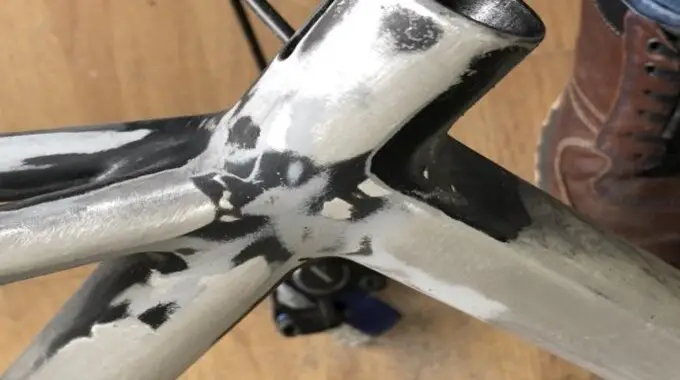
For a fresh bike makeover, it’s essential to sand your bike’s old paint surfaces before applying a new coat of paint. To adequately prepare your bike for spray painting, use sandpaper or a sanding block to remove any old, flaky paint from the surface of the bicycle frame.
While doing so, pay extra attention to areas where rust or corrosion may be present since these areas are more likely to have chipped paint. Creating a rough surface that helps the new paint adhere better to the bike’s frame is crucial for the best results. After sanding, clean your bike thoroughly with soap and water using lint-free cloths like twine or a tarp.
7. Degreasing The Substrate
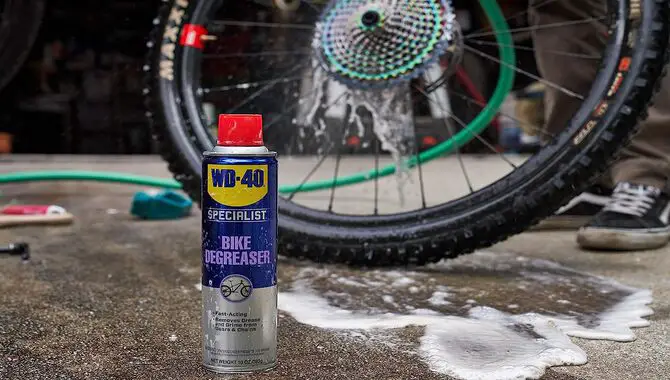
For a fresh look on your bicycle frame, it’s essential to degrease the substrate before applying any new paint. To get the most desirable outcome, use a suitable degreaser or rubbing alcohol and ensure that you clean every part of your bike correctly. Wearing gloves is necessary while working with chemicals in a well-ventilated area.
Letting the surface air-dry entirely before applying any new coat of paint is imperative. Sanding down any bumps or rusted areas can help ensure a smoother finish when preparing for this process.
8. Masking Off Bike Parts
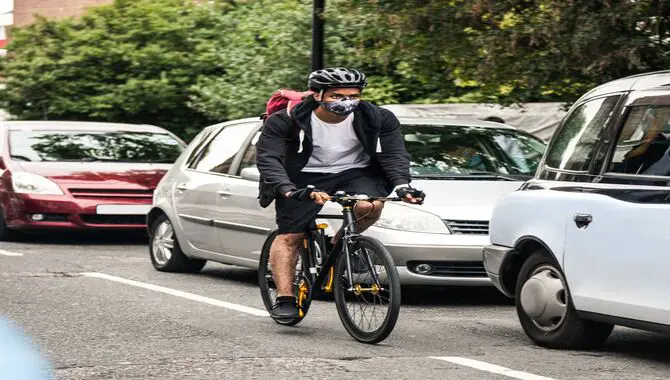
When spray painting your bike, it’s crucial to mask off the different areas of the bike that you don’t want to be painted. Use painter’s tape and plastic bags to cover parts like the seat, handlebars, or tires for the best results.
Before applying tape or plastic, make sure to clean surfaces properly. Attention should also be paid to small details like cable ends and brake calipers, which may require extra masking. A well-masked bike will give it a professional makeover without much effort.
9. Primer And Paint Application
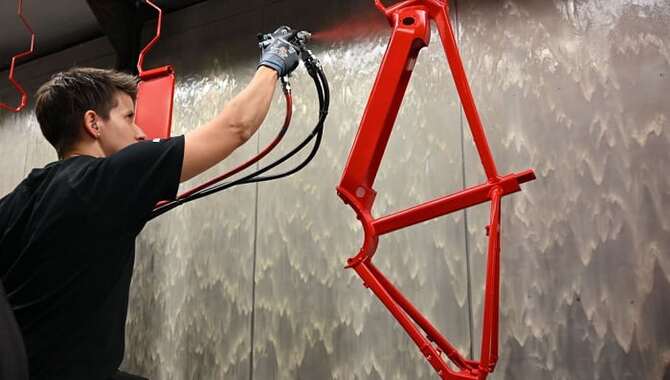
Preparing the surface is key to achieving professional results when giving your bike a makeover with new paint. Start by cleaning it thoroughly with a degreaser or rubbing alcohol and sanding down rough spots and rust with grit sandpaper for a smoother finish.
Protect areas of the bike you don’t want to be painted by covering them with painter’s tape and plastic bags. Apply two light coats of primer and paint while holding your spray can nozzle at least 15 cm away from the bicycle frame in a well-ventilated area on top of a tarp or drop cloth.
Consider using different paints, such as putty for decals and stickers. Finally, apply clear lacquer or polyurethane as your final coat for added gloss and protection against corrosion.
10. Bicycle Painting Techniques
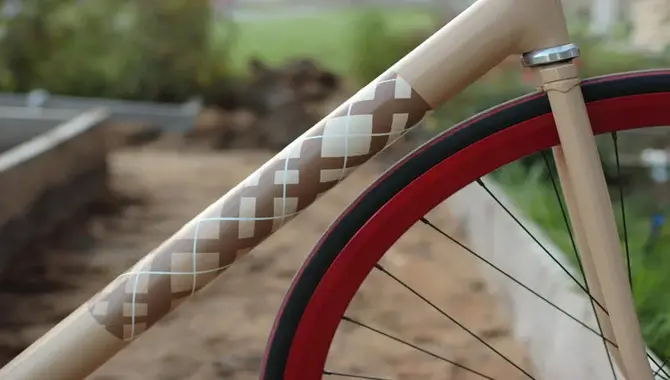
For a fresh makeover of your bicycle frame, follow these simple but essential bicycle painting techniques. First, prepare the bike’s surface by cleaning it with a damp cloth, then sanding it with sandpaper to ensure a smooth finish without lint or grit left on the frame.
Secondly, select suitable spray paint in metallic colors or bright hues, primer, and putty to provide good adhesion and protect against rust or corrosion. Thirdly, spray lightly in even coats while masking off areas such as handlebars or head tubes with painter’s tape for best results. Lastly, try different paints like gloss or lacquer and stickers or decals for a personalized touch.
Why Spray Paint Your Bike?
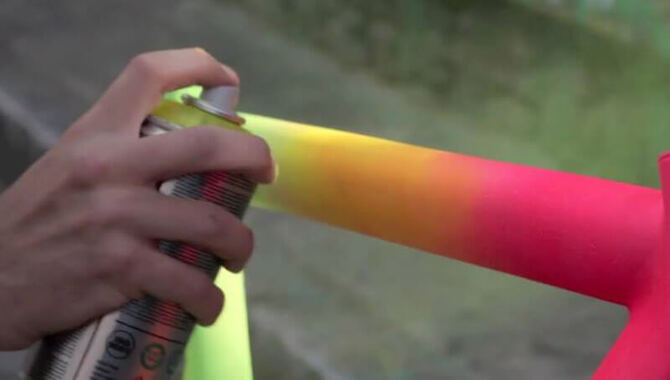
Spray painting your bike can be a fun and creative way to personalize your ride. Not only does it allow you to express your individual style, but it can also help protect your bike from rust and other damage. Spray paint is an affordable option with a wide range of colors and finishes, so you can create a unique look that suits your taste.
Additionally, spray paint is easy to apply and dries quickly, making it a convenient choice for those who want to transform their bike without spending much time or money. So, spray painting is definitely worth considering whether you want to add some color to an old bike or give a new one a fresh look.
Conclusion
Spray painting a bike can be a fun and rewarding DIY project. You can achieve a professional-looking finish by properly preparing your bike’s surface, applying thin coats of paint, and adding a clear coat for protection. Always prioritize safety when spray painting, and get creative with custom designs using stencils or tape. Painting a bike with spray paint is an easy and cost-effective way to give new life to an old ride.
Anyone can achieve a professional-looking finish with the right preparation, technique, and equipment. Always spray in a well-ventilated area, wear protective gear, and follow the manufacturer’s instructions for best results. Now that you have learned the proper steps for how to spray paint a bike. , it’s time to get creative and make your ride stand out from the crowd.
Frequently Asked Questions
1.How Do I Spray Paint A Bike?
Ans: To spray paint a bike, clean it thoroughly and remove any old paint or rust. Then, apply a primer to help the new paint adhere better. Apply thin coats of spray paint, allowing each coat to dry before applying the next. Finish with a clear coat for added protection against scratches and chips.
2.What Is The Best Way To Spray Paint A Bike?
Ans: For optimal results when spray painting a bike, prepare the surface by cleaning and sanding it. Apply a primer to improve adhesion before adding several thin coats of color, allowing each coat to dry completely. Finally, finish with a clear coat for added protection and shine.
3.What Steps Should I Take To Prepare My Bike For Painting?
Ans: Before painting your bike, it’s important to clean it well with soap and water to remove any dirt and grease. Sand the surface to create a rough texture for better paint adhesion, and cover parts you don’t want to paint with tape or paper. Applying a primer coat will provide the best finish.
4.Are There Any Safety Precautions I Should Take When Spray Painting My Bike?
Ans: When spray painting a bike, safety precautions are crucial. Wear a respirator in a well-ventilated area to avoid inhaling fumes. Wear gloves to protect your skin, and keep a fire extinguisher nearby. Avoid smoking or using open flames while spray painting.
5.How Can I Create Custom Designs Or Patterns On My Painted Bike?
Ans: To add custom designs or patterns to your painted bike, use stencils or tape to create a template for your desired design. Apply spray paint over the stencil or tape, dry it, and carefully remove the template to reveal your design. Attention to detail is crucial for best results.

I am passionate about writing blogs about bikes. I love riding my bike and love talking about it even more. My blog is the perfect place for anyone who loves biking as much as I do. Come check it out and learn some tips and tricks from me!

